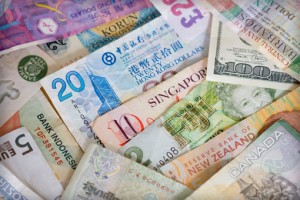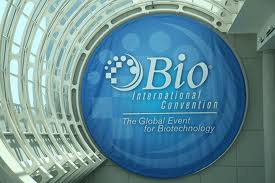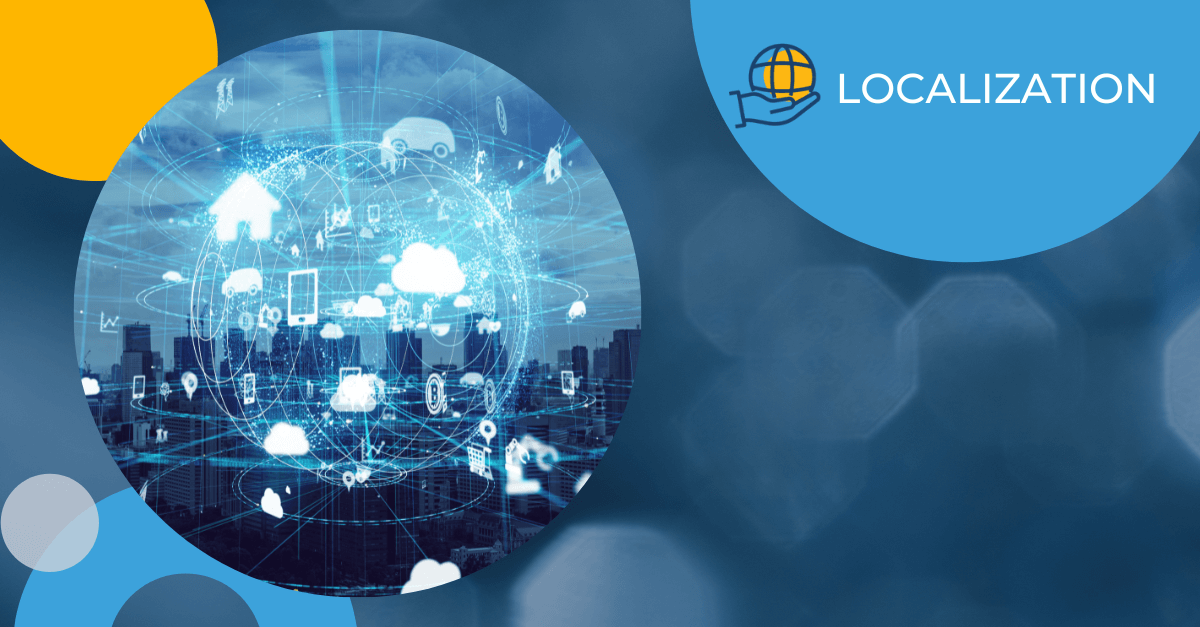Tag: Translation Services
App Translation: Now What

Translating an app is a critical tool to driving downloads and growing your business. Global reach means a wider audience, more potential clients and ultimately, far greater revenue potential. Yet making sure that the text and UI of your app is correctly translated is only the first step in helping your company maximize its global potential.
Here are three additional elements you should translate that will translate into better app success.
- Searchable Terms
From your keywords to metadata, localizing important terms and ensuring that they are properly translated can make a huge difference in expanding your reach. One of the biggest challenges with a great app is making it easily searchable and discoverable in a massive and proliferating market of mobile software. It is worth taking the time to translate and localize your key search terms and metadata to stay ahead of the curve in this critical area. It is important to not just translate the terms, but to also make sure that the implications are the same and that you’re touching upon the necessary local slang and terminology that are commonly searched in your target market.
- PR
Whether it’s your press release or online media kit, make sure that foreign journalists can easily find and report on your product. App and gaming journalists and bloggers are hugely influential and a strong review or article can lead to a major jump in downloads. The more promotional materials you can translate and/or localize for them, the better.
- Business Development
Make sure your business can grow in any market by translating financial documents for potential investors and partners. You never know where a key partner that can help your product succeed will come from. Your business and financial materials are obviously different from what you’re saying to potential users and need to be translated accordingly. Taking the time to professionally localize these documents with qualified finance translation services can make a huge difference in developing your app and obtaining the capital you need to grow and succeed.
Get the latest insights delivered to your inbox
How to Lower Your Document Translation Costs

Document translation services are a regular need for companies doing business overseas, employing foreign language staff, or looking to target foreign markets. Machine translations and discount vendors rarely get the job done and it is very important to make sure that you invest the proper resources for professional translation services. With that said, there are steps you can take to cut costs significantly for document translation without sacrificing on quality.
1. Request Repetitive text discounts
Repetitive text discounts can help save your company a significant amount of money. For many document translation projects, there are sections or paragraphs that contain repeated content. Instead of having to translate the content multiple times, you can cut costs by speaking with your translation company about discounts for repetitive text where applicable. Many translation services provide discounts when translating two or more documents with significant sections of identical content, or if there are frequent repetitions within a single document. For website translation, there is often a significant amount of repetitive text and requesting discounts is a smart move.
2. Use Translation Memory
Translation Memory is a linguistic database that makes previous document translations more accessible for future work, and automates various translation-related tasks. It accumulates and stores all previous translations and “learns” from the translator so the same phrase or sentence won’t have to be translated twice.
For example, a company might need to add additional instructions or a new product to their manual or update their brochure. Instead of having to translate the entire document again, the translation memory tool would have already stored key terms from the previously translated brochure/manual content.
This can help lower costs and also ensure consistency in terminology and style across all product manuals and brochures.
3. Request conversions
Many document translation projects involve translating content into languages that are very similar. For example, Canadian French and European French, or Latin American Spanish and European Spanish. The main differences between the languages listed above relates to slang, spelling, and punctuation. In situations like these, a company would not necessarily have to translate an entire document into both languages–instead they could edit or “convert” the translation into the other language. By asking your translation company to provide a single document translation and then to convert that translation, you can help reduce translation costs.
You never want to sacrifice quality, but the above steps can allow you to get the best of both worlds – document translation services from a top-tier company at a reduced cost that will make you or your client happy. When using translation services, make sure to demand the following reductions to receive the most competitive price possible.
Get the latest insights delivered to your inbox
Morningside Sponsors “Banding Together to End Domestic Violence”

Morningside Translations, a leading translation services company, is proud to have sponsored the “Banding Together to End Domestic Violence” event in Los Angeles yesterday. This important fundraiser raised over $200K–$207,194 so far to be exact,–to benefit the Family Violence Appellate Project (“FVAP”), a nonprofit that is changing the law in California to help survivors of domestic violence and child abuse through the appellate courts.
“Banding Together” was a veritable battle of the bands featuring live lawyer bands competing head-to-head to raise the most money for the charity. We were shocked and impressed to see how musically talented these attorneys were! And we were moved by all of our partners and clients who came out to support this incredible cause. Morningside is proud to provide translation services to help FVAP’s non-English speaking clients gain access to top-tier legal support. Thanks to all of those who helped organize this great event.
Get the latest insights delivered to your inbox
Exhibiting @ BIO International Convention 2014

Bio International Convention in San Diego
Morningside is currently exhibiting at the 2014 BIO International Convention in San Diego! We are excited to reconnect with clients and colleagues and keep up-to-date on trends in the industry. If you would like to learn more about our medical translation and patent translation services, stop by booth 736 and say hello!
Get the latest insights delivered to your inbox
Helping Your Localized Website Translate

Website translation is extremely important for companies who wish to reach foreign markets and expand national trade. Translation can easily be done by copying and pasting your website into a free literal translation service online, but will it accurately explain your company? Beyond the obvious risk of grammatical errors impacting your perceived professionalism, neglecting the importance of cultural cues can be the difference between a website that succeeds and one that just doesn’t translate.
Enter website localization.
Website localization takes the translation process a step further by accounting for the particularities of a given target market. There are professional website translation and interpretation services who understand the importance of these nuances when relating to international customers, and they can do wonders for companies looking to expand globally. However, whether you choose to do it yourself, or you want to better interact with an outsourced provider, there are a few things to keep in mind.
Pick The Right Language:
Research shows that 52.4% of Foreign Market Consumers won’t buy from websites not in their language[1] and 72.1% of international customers spend most of the time on sites in their own language[2]. The good news is that 90% of online business is done in only 13 languages. The bad news is that if you choose the wrong one, you’re chances of penetrating that market are significantly reduced.
Few business people would enter a new country without taking the time to research the potential benefits its market offered. You may look at the hold competitors have, the size of the addressable market, or the amount spent on similar products. But just as important as knowing whether there are people who could potentially buy your product, is knowing how best to sell it to them. The first step in this process is knowing which language that industry speaks. Research the country you’re entering and see what language dominates the sector you’re trying to enter. Many countries are filled with a multitude of spoken languages, but there are generally a select few used in the business world. Knowing these in advance will make sure your efforts to localize aren’t in vain.
Correct Keywords:
Incorporating the correct keywords on your website is critical for SEO and has a major impact on localization success. Keywords are highly determined by the culture and can vary greatly across regions. For example, most Americans will type in “Vacation” when searching for a resort, but customers in the UK would use “Holiday”. Understanding these differences will help dictate what words should be present in your website’s content.
Keyword research can be a painstaking process, but you’ll have little hope of succeeding without investing in it. If you are going to outsource this type of project, make sure that your provider understands the importance of Keyword research and has the capabilities to properly maximize this critical component.
General Website Layout:
The colors, images, and graphic content can all play a big role in website localization and how it is perceived by that foreign market. Make sure the graphics you use are culturally relevant and that you don’t have any existing materials that may be insensitive or offensive. It’s important to remember that many symbols are used across cultures, but can have drastically different connotations.
Color is another important factor to consider because it can have different meanings or associations. For example, in China white is the color of death and mourning, whereas the same is symbolized by purple in Brazil. Yellow represents sadness in Greece, jealousy in France, but means sacred to the Hindus.
Also, it is important to consider the direction in which your audience reads, depending on their language–whether it be from left to right, right to left, or top to bottom–as this will most likely affect the positioning and layout of your website.
Website translation will be a critical component to your localization efforts, but in order to maximize this opportunity you must consider its full impact. If you hire an interpretation service, make sure they are aware of these issues. If you decide to handle it internally, considering these factors can be the difference between a major victory or a missed opportunity.
Get the latest insights delivered to your inbox
Legal Translation: Who Should Pay?

The costs of legal translation incurred during litigation can be enormous. Document translation fees for a complex, cross-border litigation case can easily reach hundreds of thousands of dollars, if not more. Who should pay for translation services, and should the winner be reimbursed for the huge expense?
The Supreme Court will weigh in on this issue during its 2011-2012 term, which began last month. On the court’s docket is Taniguchi v. Kan Pacific Saipan, LTD, 633 F.3d 1218 (9th Cir. 2011) a case which will impact to what extent courts can award the winning party money spent for legal translation services during the course of litigation.
The case began when professional Japanese baseball player Kouichi Taniguchi fell through a wooden deck on Kan Pacific property and tore several ligaments. The injuries prevented him from playing, and he was forced to breach his contract. He sued Kan Pacific for negligence in order to cover lost wages, but ultimately lost the case. In addition, he was ordered to pay $5517.20 in legal translation costs to Kan Pacific for documents translated from Japanese to English. Taniguchi appealed.
In deciding Taniguchi, The 6th circuit had relied on U.S. Code § 1920. Title 28,1920 states that a court may reimburse the winning party for certain expenses like filing and printing transcripts, and also for certain interpretation services. The court relied on a dictionary definition of “interpret” which included “to translate into intelligible language.” Based on this, the court determined that “translation” and “interpretation” are interchangeable and that translation services should also be covered. Now as most translation companies will tell you, “interpretation” and “translation” are not synonymous. Translation involves written text; interpretation is oral and involves a speech or phone conversation. On appeal, The 7th circuit argued that this expansive definition of “interpreter” went too far, and split on allowing litigation costs like document translation to be included on the list of recoverable costs.
It was up to the 9th circuit to decide, and it ultimately agreed with the 6th circuit that courts could award the winning party the costs of legal document translation. Now it is up to the Supreme Court to make the final decision which could have far-reaching implications. The same reasoning that led the 9th circuit to decide in favor of reimbursing translation costs could impact e-discovery and a range of other litigation expenses. The cost-benefit analysis of entering into litigation could shift considerably given the potential reimbursement demands. Parties might agree to limit the amount of discovery and translation they do to hedge against paying the full costs later on, and the discovery process could become much more limited for certain cases. We’ll have more to say when this case is decided.
Get the latest insights delivered to your inbox
Quality vs. Price

The U.S. economy has yet to recover from the Great Recession, and understandably companies and law firms are still extremely cost-sensitive. Morningside always strives to reduce its clients’ translation costs, and knows the importance of offering the most competitive rates possible. But in trying to improve your and your client’s bottom line, one thing you should absolutely not do is compromise on quality. Translations are not a commodity. A bag of rice is more or less the same no matter where you get it. Not so with translations. If the quality of a translation was always the same, then Google Translate would be the ideal service, since its translations are free.
Almost every day, we are told by a company or law firm that another translation service offers much lower fees. Our response: if a translation service can offer far lower rates than its competitors, it is worth inquiring why. For example, for patent translations, Morningside relies on in-country patent attorneys to proofread translated applications. This increases the cost of the translation, but it is a critical quality assurance step. Many of our competitors do not. Our translators are widely recognized as some of the best names in the industry. Some of our larger competitors do not have the luxury of being as selective. If a translation service offers lower rates by skimping on proofreading or relying on sub-par translators, then the money saved could easily be canceled out by costs related to revising or even re-doing the translation.
In short, as you consider options for reducing translation costs, it makes sense to carefully review the workflow and processes of different translation services. Just as no two translations are exactly alike, no two translation services offer the same quality.
Get the latest insights delivered to your inbox
English – A Polyglot Language

As a professional translation company, we spend much of our time focused on foreign languages, especially languages that come up frequently for legal translations and patent translations. But every so often we turn our attention to our native English. We are constantly surprised by how diverse the English language is, and how much of the English vocabulary is derived from foreign words. According to one survey, only one-third of English words come from Old English. 41% come from French and Old Norman, and at least 15% comes from Latin. Another 10% come from a mix of other languages.
There are plenty of English words whose foreign origin is quite obvious. We can guess where chauffeur, angst, and desperado come from (French, German, and Spanish). But many words that sound like “classic” English also have a foreign origin, and the origin is not necessarily European or even Indo-European–you have probably used a few words today that come from languages that many of us have never heard of. Here are a few examples:
- Ketchup – The word comes from Amoy, a Chinese dialect, where it meant the brine of pickled fish.
- Barbecue – The quintessential American cooking tradition, BBQ actually comes from Carib, a language spoken in northern South America and the Caribbean.
- Sugar & Candy – These sweet words come from Sanskrit, the ancient Hindu language of Northern India.
- Husband – The word comes from Old Norse, the extinct language of the Vikings, where it meant “master of the house.” In modern American usage, it often means the exact opposite.
- Pal – The word comes from Romany, the Gypsy language, where it means brother or comrade.
- Tank – As in water tank. The word comes from Gujarati, a language spoken in India.
Get the latest insights delivered to your inbox
The Importance of Back Translations

With the growth of the pharmaceutical, biotechnology and life sciences industries, multinational corporations require translation services and localization services of scientific data, surveys, clinical research, lab notes, ingredients, packaging, and other related material. These technical and medical translations are needed in order to provide life-changing products to patients and consumers around the world. Accurate and precise translations are incredibly crucial as the products produced by these industries directly affect the lives and well-beings of the worldwide human population. One inaccurate translation could be the meaning between life and death.
The most effective way to ensure precise document translation is through performing back translations. This process first includes the initial translation from English into the target language by one linguist, and editing of the translation by an equally qualified second linguist. The target translation is then translated back into English by a separate translator independent of the project and with no prior knowledge to make sure that the original English has been properly translated into the foreign language.
The back translation can never be exactly like the original English text. The back translation can only give a fair idea of the content of the text and make sure that the correct meaning is conveyed. For example, in a medical survey, expressions such as, “to feel blue, to feel sad, to feel down, to be in low spirits, etc.” have more or less the same meaning, and the back translator may only use one of these.
Back translations are an extremely useful tool in ensuring that the proper meaning of the text has been conveyed. It also adds an additional level of quality check to a document translation.

